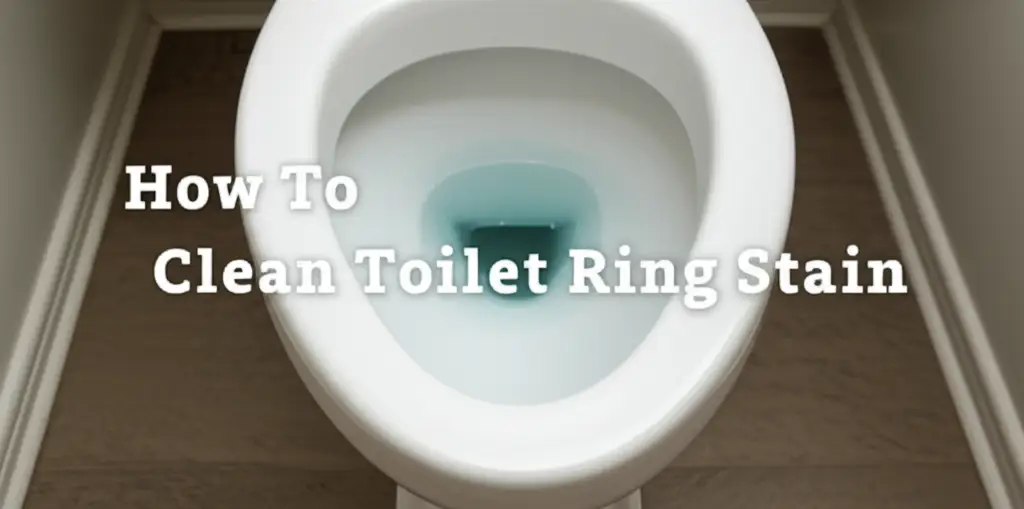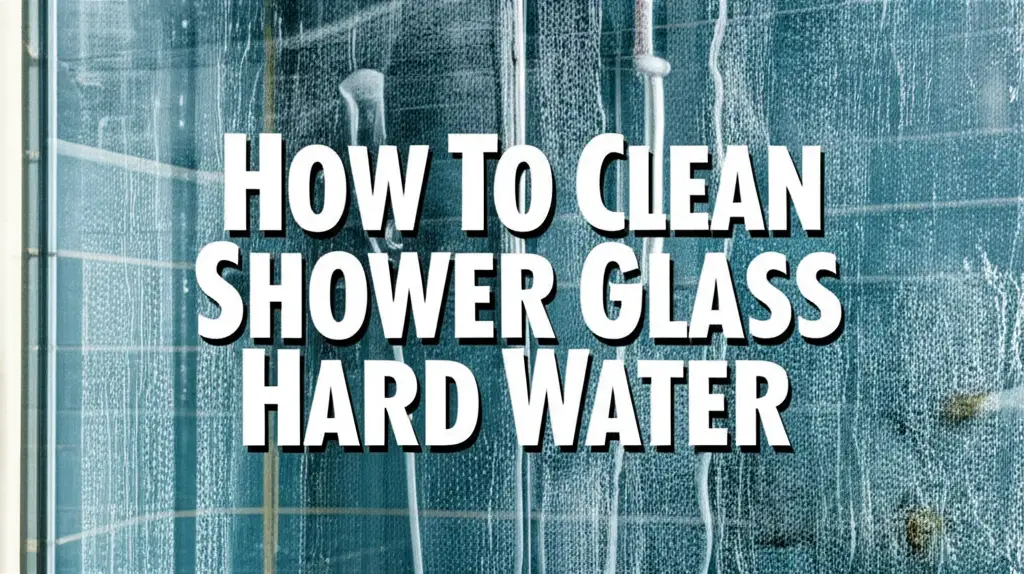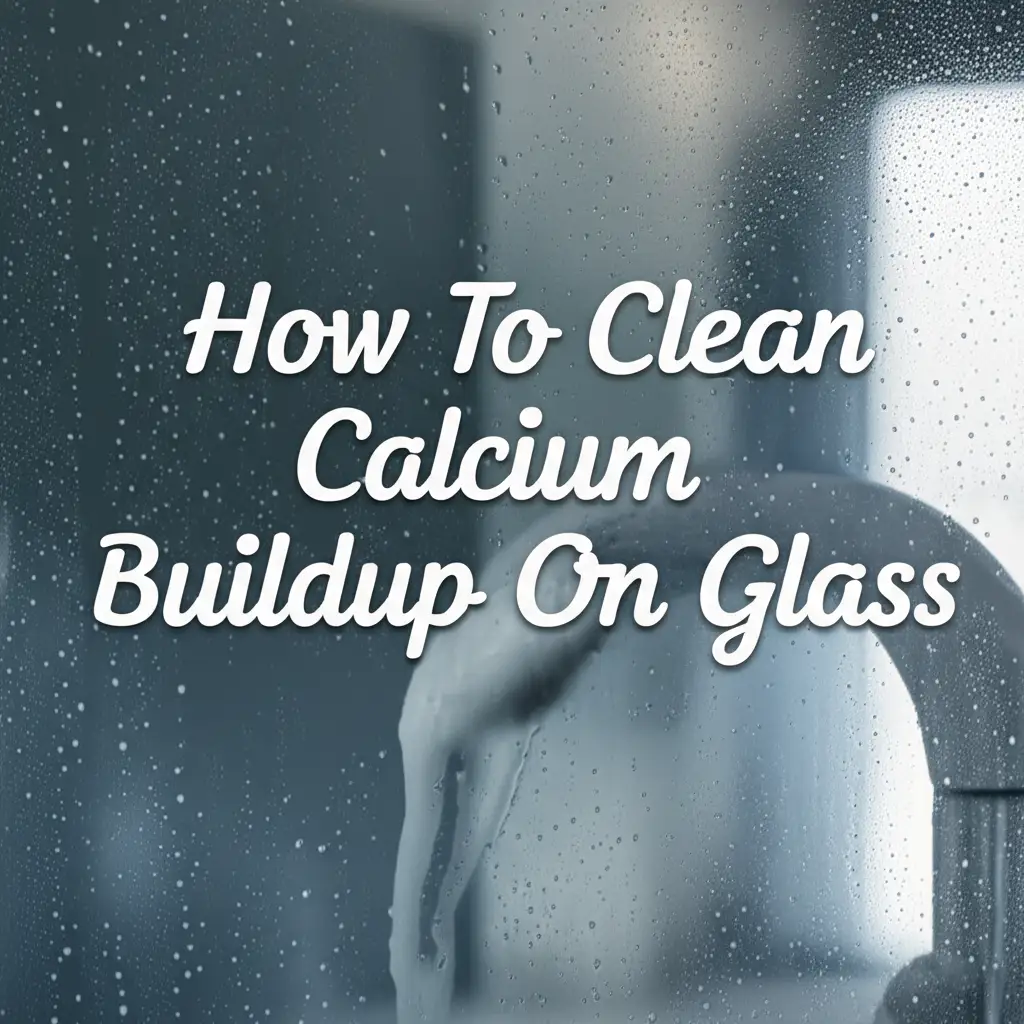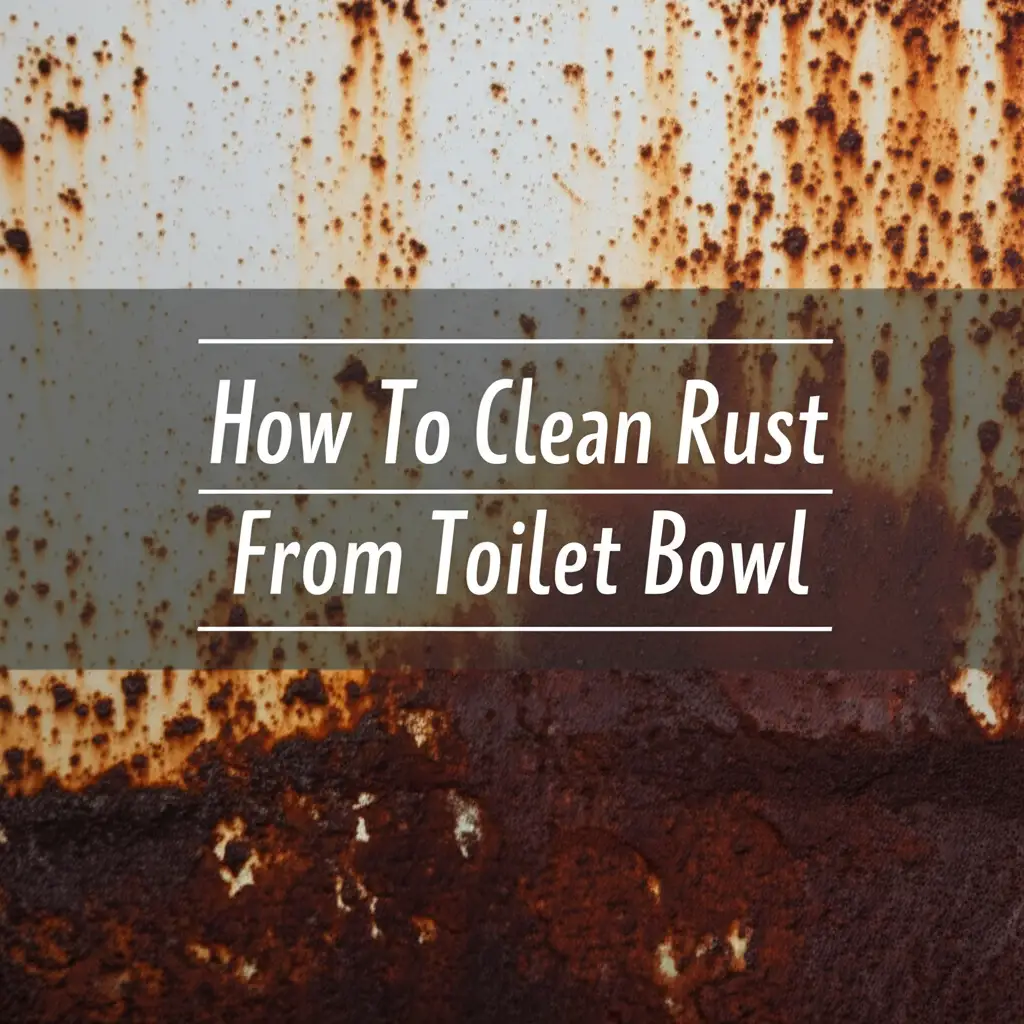· Home Cleaning · 16 min read
How To Clean Calcium Buildup In Toilet
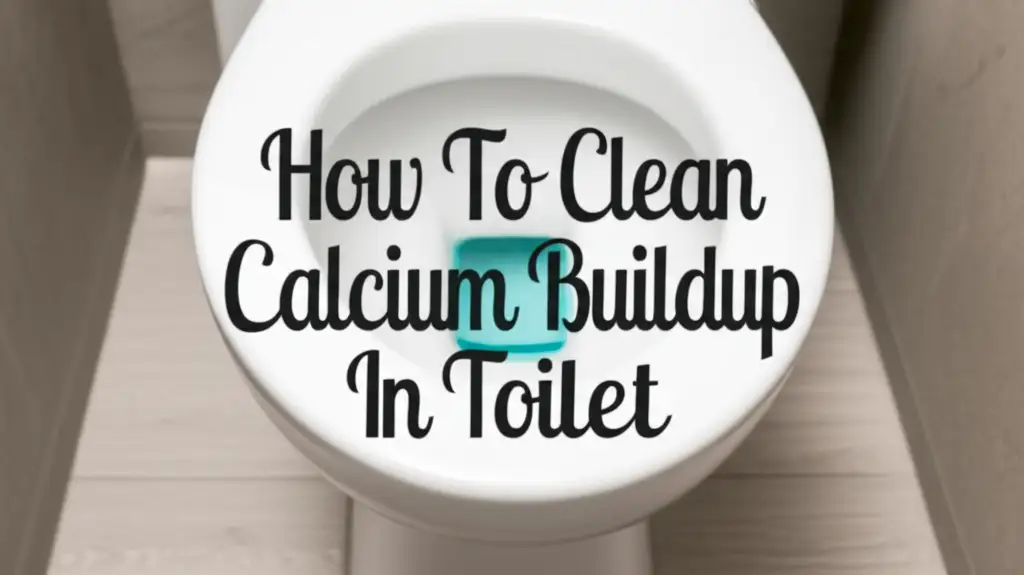
Say Goodbye to Hard Water Stains: How to Clean Calcium Buildup in Your Toilet
Seeing unsightly stains in your toilet bowl can be frustrating. These stains often signal a common household problem: calcium buildup. Hard water, rich in minerals, leaves behind these stubborn deposits. Over time, they can make your toilet look dirty, even after regular cleaning.
I know how annoying these mineral rings can be. Restoring your toilet’s sparkle is easier than you think. You do not need harsh chemicals or special tools. This article will guide you through simple, effective methods. We cover natural remedies and stronger solutions. You will learn to tackle calcium buildup in your toilet and keep it clean.
Takeaway
- Act Fast: Address calcium stains early to prevent them from becoming more severe.
- Use Acids: Vinegar or lemon juice effectively dissolve mineral deposits.
- Apply Pressure: A scrub brush or pumice stone helps remove loosened buildup.
- Prevent Future Stains: Regular cleaning and specific products can stop new buildup.
- Stay Safe: Always use proper ventilation and protective gear when cleaning.
To clean calcium buildup in your toilet, first drain the bowl water. Then, apply a strong acidic solution like white vinegar or a paste of borax. Allow the solution to soak for several hours or overnight. Finally, scrub the loosened deposits away with a stiff brush or pumice stone for a sparkling finish.
Understanding Calcium Buildup in Toilets
Calcium buildup often appears as white, off-white, or brownish stains in your toilet. It is a common issue for many homes. This buildup results from minerals in your water supply. We call this “hard water.”
Hard water contains high levels of dissolved minerals. These minerals include calcium and magnesium. When water evaporates, it leaves these minerals behind. Over time, these mineral deposits accumulate. They form a rough, scaly layer on surfaces. In your toilet, this layer appears in the bowl, around the rim, and in the jet holes. It clings especially to the waterline. This accumulation makes your toilet look dirty, even if you clean it often. It also creates a rough surface where dirt and grime can stick easily. Understanding the cause helps you choose the right cleaning method. The goal is to dissolve these mineral bonds.
What Causes These Stubborn Stains?
The primary cause of calcium buildup is hard water. Hard water passes through your home’s pipes. It enters your toilet. Each flush introduces more minerals into the bowl. When the water sits, some of it evaporates. The dissolved minerals remain. They cling to the porcelain surface. This process repeats with every use. Slowly, these layers build up. They create the visible rings and spots you see.
Temperature can also affect buildup. Hot water can make minerals precipitate faster. This means calcium can accumulate more quickly in areas like your toilet. Rust or other mineral deposits can also mix with calcium. This makes the stains appear reddish or darker. Knowing the source of the problem helps prevent it from returning. Tackling hard water issues at their root can protect your entire plumbing system. Cleaning calcium buildup in pipes involves similar principles, focusing on acid dissolution.
Gathering Your Cleaning Arsenal
Before you start cleaning calcium buildup in your toilet, gather the necessary supplies. Having everything ready saves time. It ensures you complete the task effectively. You will need a mix of cleaning agents and tools. Many of these items are likely already in your home.
Your safety is important. Always wear rubber gloves to protect your hands from cleaners and germs. Eye protection, like safety glasses, is also a good idea. Ensure your bathroom is well-ventilated. Open a window or turn on the fan. This helps disperse any fumes from cleaning products. These simple precautions make your cleaning experience safer and more comfortable.
Essential Cleaning Tools
You need tools to apply cleaners and scrub away deposits. A sturdy toilet brush is crucial. Choose one with stiff bristles to provide good scrubbing power. For tougher spots, a pumice stone can be very effective. It is abrasive but safe for porcelain when used wet and with light pressure. Sponges or old rags are useful for applying solutions. Keep a bucket handy for mixing solutions or holding dirty water. A small, stiff-bristled brush or an old toothbrush can clean tight spots. These include under the rim or in the jet holes.
Effective Cleaning Agents
Several cleaning agents work well on calcium buildup. White vinegar is a popular natural choice. Its acetic acid dissolves minerals effectively. Baking soda acts as a mild abrasive and odor absorber. Combine it with vinegar for a fizzing action. Borax is another strong mineral remover. For very tough stains, commercial toilet bowl cleaners designed for hard water or limescale are available. Look for products containing hydrochloric acid or phosphoric acid. Always read product labels carefully. Follow directions for safe use. These ingredients specifically target mineral deposits. They make the job easier. For similar challenges, limescale from toilet bowls cleaning also relies on acidic solutions.
The White Vinegar Method: A Natural Powerhouse
White vinegar is a cleaning champion. It is natural, affordable, and effective against calcium buildup. Its acetic acid works to dissolve the mineral deposits. This makes them easier to scrub away. This method requires a bit of patience, but the results are worth it. You will see your toilet bowl regain its shine.
First, you need to prepare the toilet. Turn off the water supply to the toilet. This is usually a small valve located behind or near the base of the toilet. Then, flush the toilet to empty most of the water from the bowl. You can use a cup or small bucket to remove any remaining water. This ensures the vinegar is not diluted. Now, your toilet is ready for the vinegar treatment.
Applying White Vinegar for Best Results
Pour several cups of undiluted white vinegar directly into the toilet bowl. Make sure the vinegar covers all the calcium-stained areas. This includes the waterline and any spots below it. For stains around the rim, soak paper towels in vinegar. Then, place these vinegar-soaked towels directly onto the stains. Press them firmly to ensure contact. This allows the vinegar to work directly on the buildup.
Let the vinegar sit for at least several hours. For severe calcium buildup, let it soak overnight. The longer the vinegar sits, the more time it has to break down the minerals. You might hear a slight fizzing sound. This means the acid is working. After soaking, use your toilet brush to scrub the treated areas thoroughly. The calcium should loosen and come off easily. Flush the toilet a few times to rinse away the loosened minerals and vinegar. Your toilet will look much cleaner. This method is also safe for your toilet tank. You can learn more about cleaning toilet tanks with baking soda to address internal mineral issues.
Baking Soda and Borax: The Dynamic Duo
When white vinegar alone is not enough, baking soda and borax offer an excellent combination. This duo creates a powerful cleaning solution. It tackles even tougher calcium buildup. Baking soda provides a gentle abrasive action. Borax is known for its ability to cut through grime and mineral deposits. Together, they create a formidable team for your toilet.
You will start with the preparation steps. First, turn off the water supply to your toilet. Flush the toilet to empty the bowl as much as possible. You want the cleaning agents to be as concentrated as they can be. Use a cup or small bucket to remove any remaining water. This ensures the dry ingredients stick well to the stained surfaces. Your toilet is now ready for the powerful cleaning action of baking soda and borax.
Creating and Applying the Powerful Paste
To create your cleaning paste, sprinkle a generous amount of borax directly into the empty toilet bowl. Focus on the areas with calcium buildup. Let the borax sit for about 30 minutes. This gives it time to start working on the minerals. After 30 minutes, sprinkle a cup of baking soda over the borax. Then, slowly pour two cups of white vinegar into the bowl. This mixture will fizz and bubble. The fizzing action helps loosen the mineral deposits.
Use your toilet brush to mix the paste and spread it over all the stained areas. For stains above the waterline, you can make a thicker paste in a separate bowl. Apply this paste directly to the stains. Let the mixture sit for at least an hour. For very stubborn buildup, allow it to sit overnight. After the soaking period, scrub the bowl thoroughly with your toilet brush. The calcium deposits should be much easier to remove. Flush the toilet several times to rinse away the residue. Your toilet will be noticeably cleaner.
Pumice Stone: Gentle Abrasive for Stubborn Stains
A pumice stone is a fantastic tool for tackling stubborn calcium buildup. It provides a gentle abrasive action. This effectively scrapes away mineral deposits without scratching porcelain. Many people worry about scratching their toilet, but a pumice stone is safe when used correctly. It is a natural volcanic rock. Its fine grit is harder than mineral deposits but softer than porcelain.
Before using a pumice stone, make sure both the stone and the toilet surface are wet. Using a dry pumice stone on a dry toilet can cause scratches. Always wet the stone thoroughly under running water. Also, ensure there is water in the toilet bowl. This lubrication helps the stone glide smoothly. It prevents any damage to the porcelain surface. Preparing properly ensures effective and safe cleaning.
How to Use a Pumice Stone Effectively
Once wet, gently rub the pumice stone over the calcium buildup. Apply light to moderate pressure. You will notice the stone wearing down as it works. This is normal. It means the stone is effectively removing the mineral deposits. The buildup will turn into a gritty paste. Continue rubbing until the calcium stain disappears. Rinse the stone frequently under running water to clean off the residue.
Work in small sections. This helps you focus on specific areas. Be careful around any painted or coated parts of the toilet. Pumice is best for the vitreous china (porcelain) of the bowl. Once you have removed all the calcium, flush the toilet to rinse away the residue. Your toilet will look incredibly clean. For more detailed instructions on this tool, read about cleaning a toilet with a pumice stone. This method works wonders for severe mineral stains.
Commercial Cleaners: When You Need Reinforcement
Sometimes, natural methods are not strong enough. For severe calcium buildup, commercial toilet bowl cleaners are necessary. These products contain stronger acids or chemicals. They are specifically formulated to dissolve tough mineral deposits. They can save you a lot of scrubbing time.
When using commercial cleaners, safety is paramount. Always read the product label thoroughly. Pay close attention to the instructions and warning labels. Many of these cleaners contain strong acids. They can cause skin irritation or respiratory problems. Ensure your bathroom is very well-ventilated. Open windows wide or turn on exhaust fans. Wear rubber gloves and eye protection. Never mix different commercial cleaners, especially those containing bleach with acid-based cleaners. This can create dangerous fumes. Safety first ensures effective cleaning.
Choosing and Applying Commercial Solutions
Look for commercial cleaners that specify “hard water,” “limescale,” or “calcium removal” on their labels. Products with hydrochloric acid, phosphoric acid, or sulfamic acid are effective choices. These acids aggressively break down mineral bonds. Follow the specific application instructions on the product bottle. Typically, you apply the cleaner directly to the toilet bowl. Ensure it covers all the stained areas. You might need to push water out of the bowl first to get an undiluted application.
Allow the cleaner to sit for the recommended time. This could be 10 minutes to an hour, depending on the product. Do not exceed the suggested time. The chemicals need time to work, but leaving them too long can sometimes damage surfaces or become less effective. After the soaking period, scrub the bowl vigorously with a toilet brush. The calcium should be significantly softened and easier to remove. Flush the toilet multiple times to rinse away all chemical residue. Store commercial cleaners safely away from children and pets.
Addressing Specific Toilet Areas
Calcium buildup does not just appear in the main toilet bowl. It often hides in less visible but equally important areas. These hidden spots can harbor bacteria and reduce your toilet’s efficiency. Cleaning these specific areas is crucial for a truly clean and functional toilet. Focusing on these spots ensures comprehensive removal of mineral deposits.
These often-overlooked areas include the rim jets and the siphon jet hole. Mineral deposits can clog these tiny openings. When they get clogged, the toilet flush becomes weaker. Water might not distribute evenly. This leads to inefficient flushing and poor bowl cleaning. Addressing these specific areas ensures your toilet works its best. It also keeps your entire toilet fresh and hygienic.
Cleaning the Rim Jets and Siphon Jet Hole
The rim jets are small holes located under the rim of the toilet bowl. Water sprays from these holes during a flush. Calcium buildup can block them. To clean, pour white vinegar into the overflow tube inside your toilet tank. This will send vinegar through the rim jets. Let it sit for several hours or overnight. For stubborn clogs, use a small wire or an unbent paperclip to clear each jet hole manually. Gently poke into each hole to dislodge mineral deposits.
The siphon jet hole is the larger opening at the very bottom of the toilet bowl. This hole provides the powerful water force for a strong flush. Calcium can accumulate around its edges or inside it. Use a stiff-bristled brush or a thin bottle brush to scrub around and inside this hole. You can also pour vinegar directly into the bowl. Make sure it covers the siphon jet. Let it soak. Then, scrub vigorously. Clearing these vital passages will greatly improve your toilet’s flushing power. It helps keep the bowl clean. For a detailed guide on this specific part, you can review how to clean a toilet siphon jet hole.
Preventing Future Calcium Buildup
Preventing calcium buildup is always better than cleaning it. Regular maintenance is key. You can significantly reduce the formation of new stains. This saves you time and effort in the long run. Keeping your toilet clean helps maintain its appearance. It also prolongs its lifespan.
Consistent effort makes a big difference. Do not wait for severe stains to appear. Incorporating preventive measures into your regular cleaning routine is simple. These steps are easy to implement. They are effective at keeping your toilet sparkling. Preventing buildup saves money on harsh cleaners too.
Regular Cleaning and Proactive Measures
A simple weekly wipe-down helps prevent hard water stains. Spray an all-purpose bathroom cleaner, or a vinegar solution, inside the toilet bowl. Then, quickly scrub with a toilet brush. This removes mineral residues before they harden. A quick scrub takes only a minute. This small effort makes a big impact.
Consider using a toilet bowl cleaner that contains a hard water stain preventative. These products often release chemicals with each flush. They work to inhibit mineral attachment. Drop-in tablets are also available. However, some tablets can cause issues with toilet tank components over time. Read reviews and product descriptions carefully.
For long-term solutions, a water softener is the most effective. A water softener treats your home’s entire water supply. It removes hard minerals like calcium and magnesium. This prevents buildup not only in your toilet but also in your pipes, showerheads, and appliances. Installing a water softener is an investment. It provides lasting benefits throughout your home. This is the most comprehensive way to tackle hard water problems. For example, it helps with cleaning calcium buildup on glass in your shower.
FAQ Section
Is Coke effective for calcium buildup in toilets?
Yes, cola drinks like Coke can help. They contain phosphoric acid. This acid is mild but can break down some mineral deposits. Pour a can of Coke into the toilet bowl. Let it sit for several hours or overnight. Then, scrub and flush. It works best on lighter stains. Stronger acids like vinegar are often more effective for heavy buildup.
How often should I clean calcium buildup?
Clean calcium buildup as soon as you notice it forming. For preventative measures, a quick weekly scrub with a mild acid cleaner helps. If your water is very hard, a monthly deep clean with vinegar or a commercial product might be necessary. Regular cleaning prevents severe staining.
Can I use bleach with vinegar for calcium?
No, never mix bleach with vinegar. This combination creates highly toxic chlorine gas. This gas is dangerous to inhale. It can cause severe respiratory problems. Always use proper ventilation. Use one product at a time. Rinse the toilet thoroughly before using a different type of cleaner. Safety is crucial when using chemicals.
What causes calcium buildup in toilets?
Calcium buildup in toilets is mainly caused by hard water. Hard water contains high levels of dissolved minerals, especially calcium and magnesium. When water evaporates from the toilet bowl, it leaves these minerals behind. Over time, these deposits accumulate, forming visible stains and rough textures.
When should I call a professional for toilet stains?
You should call a professional if you cannot remove the stains after trying multiple methods. Some buildup might indicate a severe hard water issue requiring a whole-house water treatment system. If your toilet’s flushing power is consistently weak, a plumber can check for internal blockages not accessible by standard cleaning.
Conclusion
Tackling calcium buildup in your toilet can seem like a big job. You now know several effective methods to restore your toilet’s sparkle. We explored everything from natural remedies like white vinegar and baking soda to powerful commercial cleaners. You also learned how to use a pumice stone safely for tough stains. Cleaning specific areas like rim jets and the siphon jet hole ensures a thorough job.
Remember that consistency is key. Regular, simple maintenance prevents severe calcium stains from forming. Understanding the cause of the problem—hard water—helps you choose the best long-term solutions. Whether you opt for a natural soak or a stronger chemical approach, always prioritize safety. Wear protective gear and ensure good ventilation. With these steps, your toilet will stay clean. It will function efficiently for years to come. Do not let hard water win. Take action today. Enjoy a cleaner bathroom tomorrow.
- toilet cleaning
- calcium buildup
- hard water stains
- limescale removal
- DIY cleaning
- bathroom maintenance
- toilet care

